If you’re like me and you’ve spent any time wandering the creeks, fields, and quarries of Ohio, you know this state is hiding some treasures.
And I’m not just talking about beautiful landscapes—though we’ve got plenty of those too. I mean actual valuable rocks, minerals, and gemstones.
Right here in Ohio, you can uncover things like sparkling quartz crystals, colorful fluorite, and even fossilized coral that’s worth a pretty penny to the right collector. Some lucky folks have even found rare Ohio diamonds, believe it or not!
Whether you’re a seasoned rockhound or just looking for a way to make a little extra cash, I’ll show you what’s out there and where you can find it. We’ve got plenty of spots where you can dig, hunt, and discover some real gems—literally.
The Most Valuable Rocks, Minerals, And Gems You Can Find In Ohio
Here’s the complete rundown of what treasure hunters can expect to find in our state.
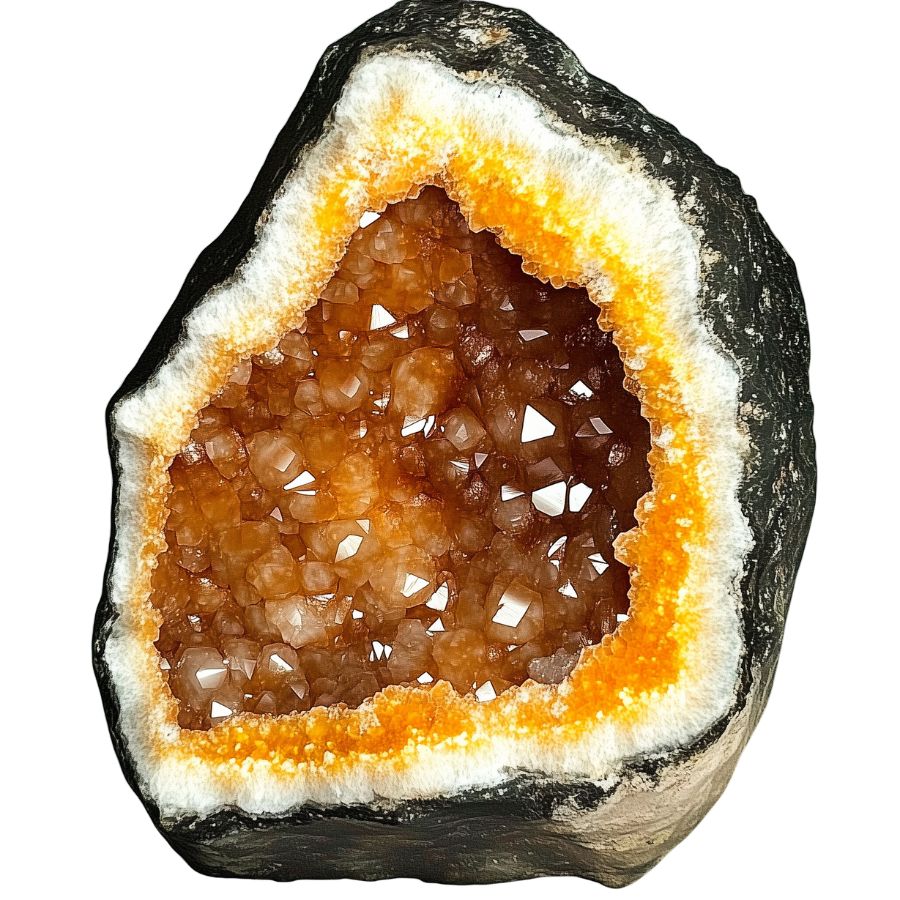
Geode
Geodes are formed when mineral-rich water flows into a cavity, leaving behind deposits over time. In Ohio, we primarily find quartz-lined geodes, but you might also spot some with calcite or even amethyst crystals inside.
The quartz geodes are the most common and come in a range of white to grayish hues, while calcite geodes sometimes have a honey-colored glow. We’ve created your go-to guide for Ohio Geodes.
Why Geodes Are Valuable
Geodes are more than just pretty rocks—they’re natural works of art. Many collectors and rockhounds love them for their beauty, uniqueness, and the thrill of the hunt.
They also have some monetary value, especially if the crystals inside are particularly clear or colorful. Plus, geodes make great decorative pieces, and there’s something magical about uncovering one yourself.
Great Places to Find Geodes in Ohio
Ohio is full of spots where you can dig up these sparkly treasures. Here are three of the best places to start your geode-hunting adventure:
- Findlay Arch Mining District: Located in northwest Ohio, this area is known for its rich geological history. Creek beds and quarries in this region often yield geodes packed with quartz crystals.
- Sandusky County: This county is home to several spots where geodes can be uncovered, especially in stream beds and areas with exposed rock. The countryside offers great opportunities for finding these hidden gems.
- Serpent Mound Area: This region has a fascinating geological history and is another prime location for finding geodes. Streams and eroded areas near the mound often reveal these treasures.
Visit our in-depth Ohio guide for more Geodes locations.
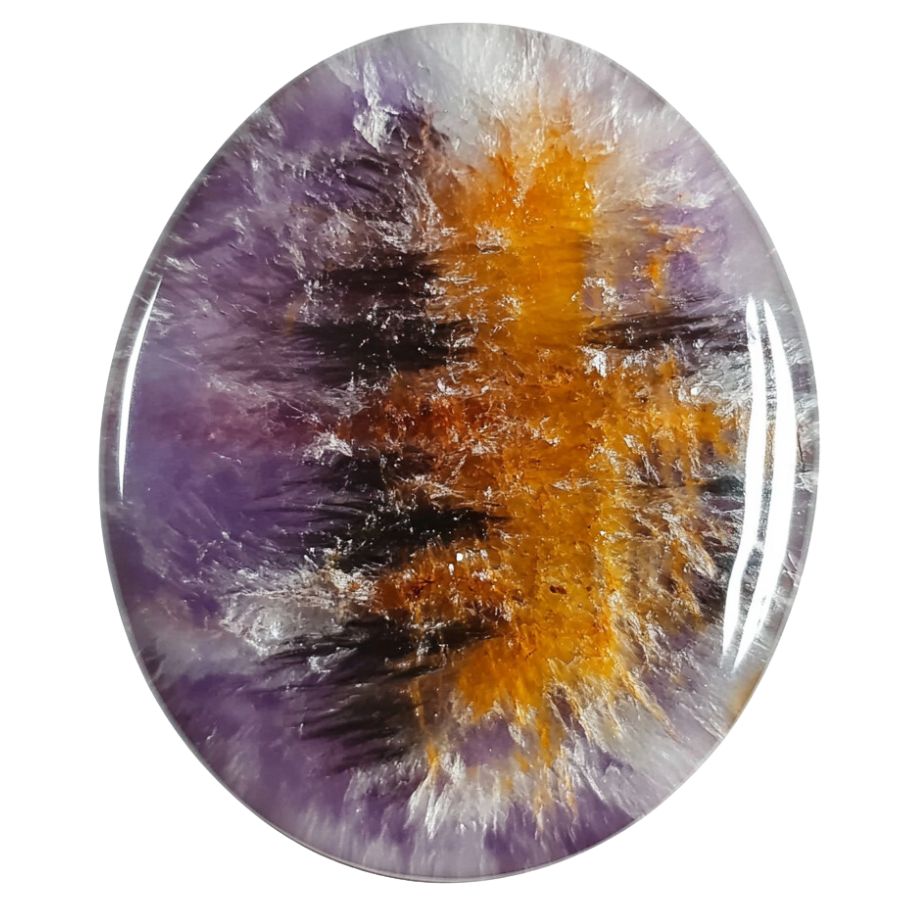
Amethyst
Amethyst is a variety of quartz, and its signature purple color comes from trace amounts of iron and natural irradiation. In Ohio, amethyst tends to be found in geodes—those round, hollow rocks lined with crystal formations inside.
The amethyst here is often lighter in color, ranging from soft lavender to a pale violet, but occasionally, you’ll stumble on deeper hues. We also get “zoned” amethyst, which has bands of purple and clear quartz that make for really interesting patterns.
Why It’s Valuable
Sure, it’s beautiful, but there’s more to amethyst than meets the eye. For one, it’s popular in jewelry and decoration because of its durability and striking color.
On a more personal level, it’s a gem tied to spiritual and healing properties—people believe it brings calm, balance, and clarity. Plus, finding a nice piece of Ohio amethyst feels like unearthing a little slice of local history.
Great Places to Find It Here
There are a few places where you can try your luck and come away with some amethyst treasures.
- Licking County: This area has some rich geological formations where amethyst have been discovered. Streams and erosion-prone spots are the best places to explore, making it a fun destination for a day trip.
- Cincinnati Arch: Geodes containing amethyst have been found in rock layers along this ancient structure. Look for areas where erosion has exposed the layers, like creeks or small quarries.
- Northeast Ohio Quarries: Some old limestone quarries in this part of the state have been known to yield amethyst geodes. Always check to see if you need permission before exploring private land.
Find the best Amethyst spots across Ohio in our complete guide.
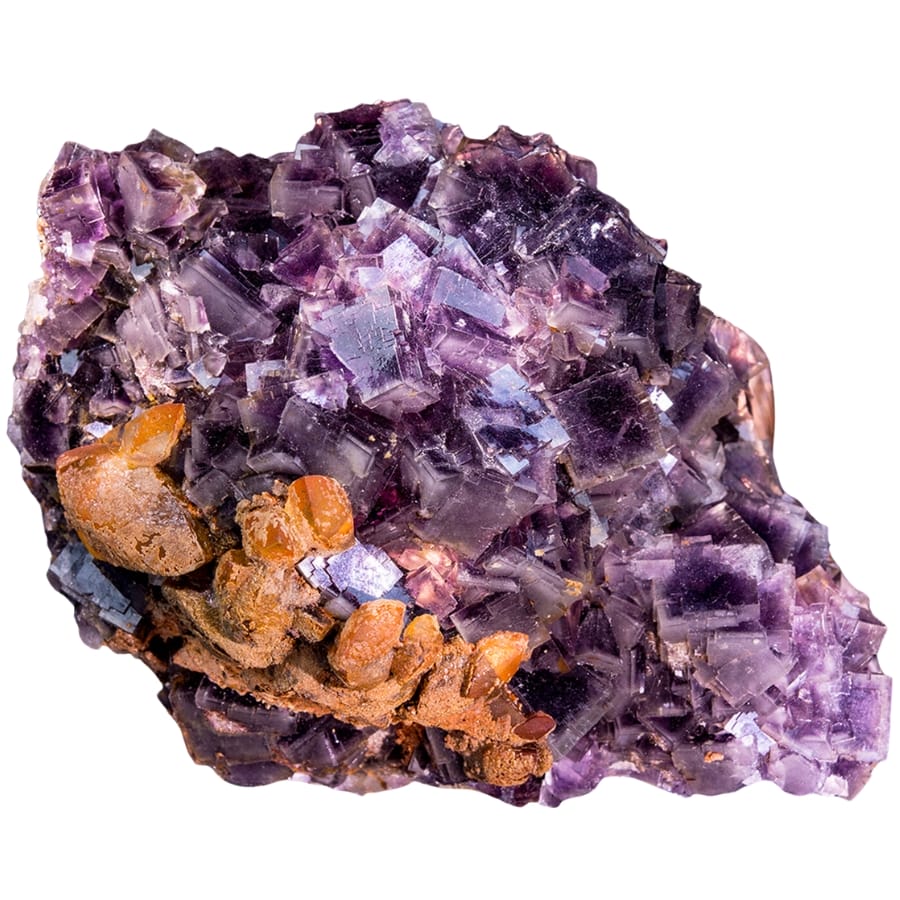
Fluorite
Fluorite is a mineral made of calcium fluoride, and it forms in cubic or octahedral crystals. What makes fluorite special is its ability to fluoresce under ultraviolet light, meaning it can glow!
Here in Ohio, most of the fluorite you’ll find is purple, though green and yellow varieties also show up. The mineral is often found alongside others like calcite and quartz, making for some beautiful combinations.
Why It’s Valuable
Fluorite is valuable for a couple of reasons. First, it’s widely used in industries like steelmaking and ceramics because of its chemical properties. But for us collectors, its real value is in its beauty and rarity.
High-quality fluorite specimens are sought after by mineral enthusiasts, and Ohio happens to be a great place to find some.
Great Places to Find It in Ohio
If you’re ready to hunt for some fluorite, you’re in luck—there are several spots in Ohio where you can search for it. Here are a few of the best places to start:
- Stoneco Quarry: This active quarry is known for its beautiful purple fluorite specimens. Be sure to check for permission to collect here, as access can sometimes be limited.
- Flint Ridge State Memorial: While better known for flint, this site also has small fluorite specimens mixed with other minerals. It’s a scenic place to explore, too.
- Nelson Ledges Quarry Park: A favorite among rock hounds, this park has yielded fluorite along with other minerals like quartz. It’s a great place for a day trip with a chance to dig up some treasures.
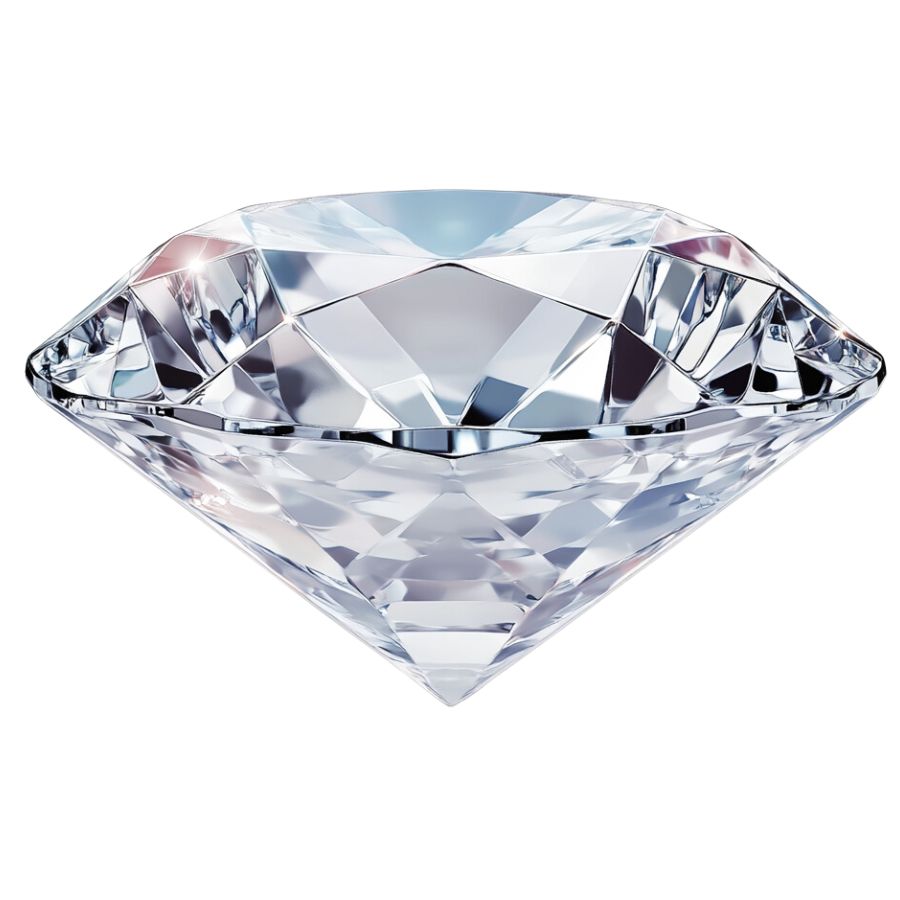
Diamond
Diamonds are formed deep within the Earth under extreme pressure and heat, eventually making their way to the surface through volcanic activity.
In Ohio, the diamonds found are typically small and uncut, brought here long ago by glaciers during the Ice Age. These “glacial drift diamonds” are unique because they were transported from Canada and scattered across the Midwest, including our state.
Why It’s Valuable
Diamonds are prized for their unmatched brilliance, durability, and rarity. Even though the diamonds found in Ohio are usually small, they hold value because of their natural origins and the sheer luck involved in discovering one.
Plus, for those of us who love the thrill of treasure hunting, the possibility of finding a genuine diamond makes it all the more worthwhile.
Great Places to Find It Here
If you’re looking to try your luck at finding a diamond in Ohio, here are some great spots to explore. While there are no guarantees, these locations are rich in geological history and might just surprise you:
- Milford Area: This small town in southwestern Ohio has a history of glacial activity that left behind a variety of unique stones, including the occasional diamond.
- Sugar Camp Run: Located near the southern part of the state, this stream has been known to carry glacial deposits where lucky rockhounds have discovered rare finds.
- Mahoning County: Situated in northeastern Ohio, this area is another hotspot for glacial deposits, making it a promising place for adventurous diamond seekers.
Get the full scoop on Diamond locations throughout Ohio here.
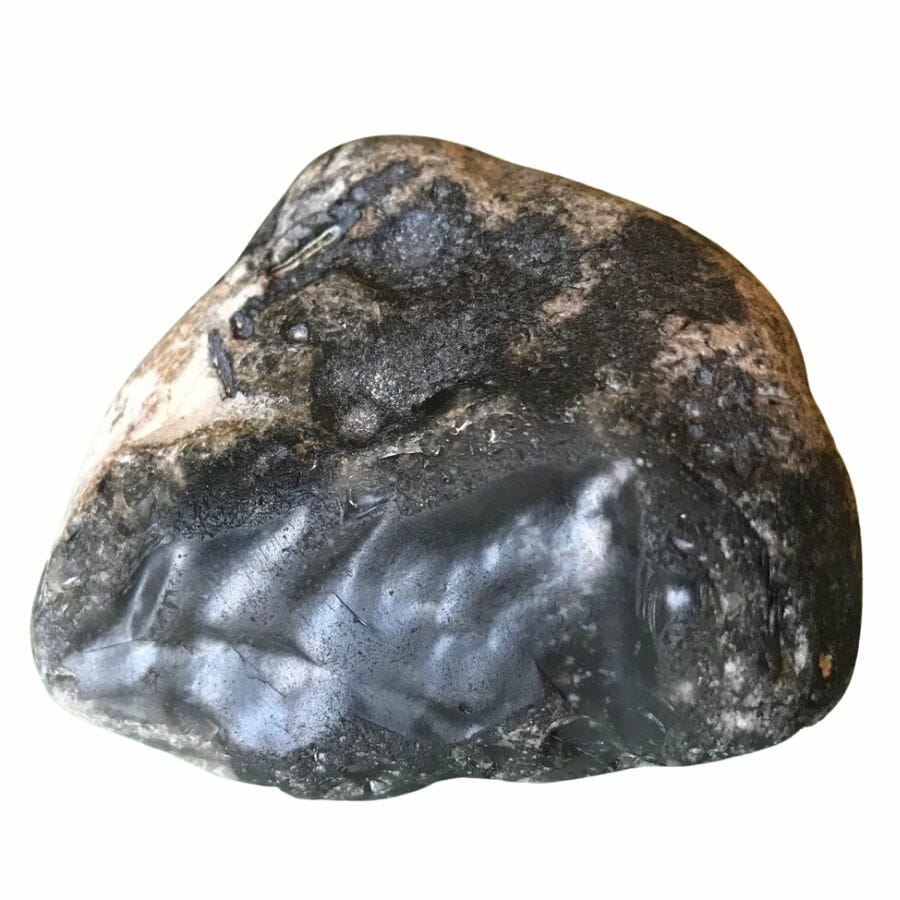
Flint
Flint is a type of hard, sedimentary rock that forms when silica replaces the original minerals in limestone or chalk. It’s been used for centuries by Native Americans for tools and weapons because it can be chipped into razor-sharp edges.
Ohio’s flint is particularly famous for its vibrant colors, which range from reds and yellows to blues and greens, thanks to trace minerals like iron and manganese. Our state even has its own special variety called “Flint Ridge Flint,” known for its stunning range of colors.
Why It’s Valuable
Flint has a lot of practical and historical significance. Archaeologists have found tools and weapons made of Ohio flint that date back thousands of years, showing how important it was to early humans.
Today, collectors and artists prize Ohio flint for making jewelry, knives, and other decorative items. Plus, its sharp edges make it a popular choice for survivalists and bushcraft enthusiasts who still use it to create sparks for fire-starting.
Great Places to Find It Here
If you’re itching to go flint hunting, you’re in luck—Ohio has plenty of spots where you can dig up this local treasure. Here are a few of my favorite places to check out:
- Paint Creek Lake: Near Bainbridge, this spot is a hidden gem for flint hunters. The shoreline and nearby fields often reveal flint pieces, especially after a good rain.
- Flint Ridge State Memorial: Here, you can see where Native Americans once mined flint and maybe even find a few colorful pieces yourself.
- Hocking Hills Region: This area is a great place to hunt for flint. Keep your eyes peeled while exploring trails or creek beds, and you might stumble across some unique finds.
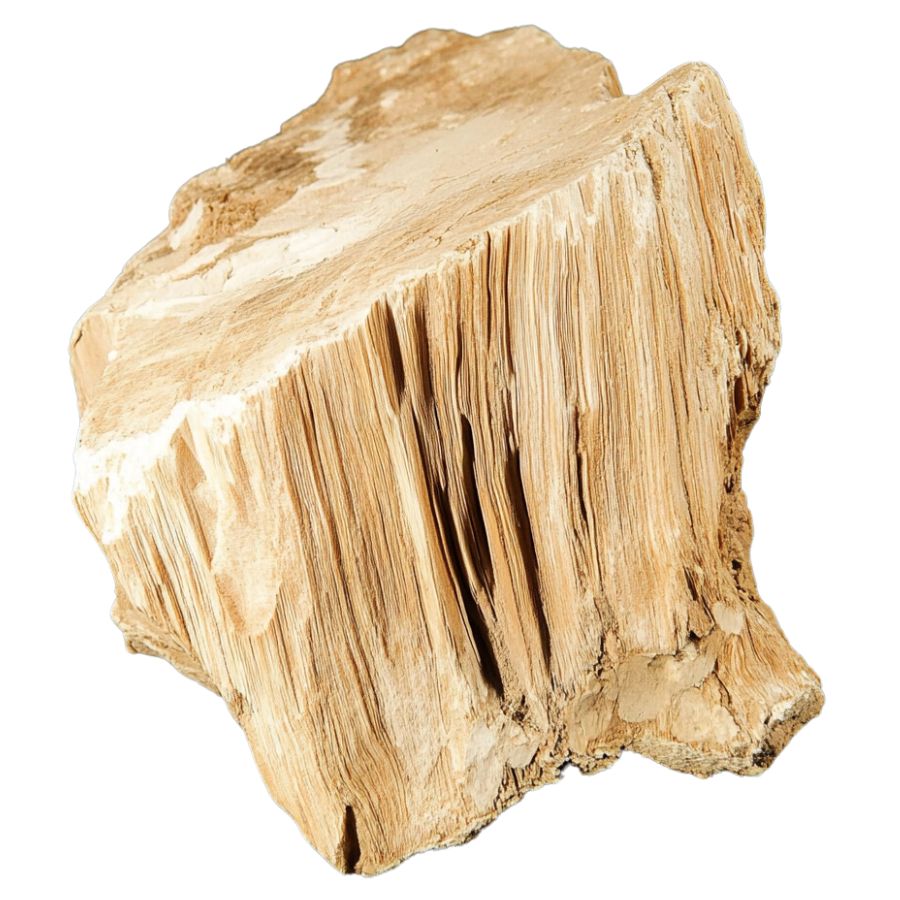
Petrified wood
Petrified wood is the result of trees that were buried under sediment millions of years ago and slowly replaced by minerals like quartz. Over time, this process transformed the wood into a stone-like structure while preserving its original patterns and textures.
Here in Ohio, most of the petrified wood comes from ancient forests that existed during the Pennsylvanian period. You’ll find examples of petrified conifers and ferns, reflecting the lush, swampy environments that once covered the state.
Why It’s Valuable
Petrified wood isn’t just cool to look at; it’s a tangible piece of Ohio’s natural history. Collectors prize it for its beauty, with its shimmering mineral layers often used in jewelry and home decor.
Beyond aesthetics, it also offers scientists clues about the plants that grew here millions of years ago and how the environment has changed since then.
Great Places to Find It Here
If you’re ready to hunt for some petrified wood, Ohio has plenty of spots worth exploring. Here are three places where you might just uncover a piece of ancient history:
- Captina Creek – Located in the southeastern part of the state, the creek beds and surrounding areas sometimes reveal chunks of petrified wood, especially after heavy rains.
- Middle Branch Shade River – This serene area in southern Ohio is another fantastic spot. Exploring the riverbanks or nearby gravel deposits might lead you to some incredible finds.
- Muskingum River Valley – The riverbanks here sometimes reveal chunks of petrified wood, especially after flooding or erosion events. Take a walk along the water, and you never know what you might find!
Discover more Petrified wood locations across Ohio in our comprehensive guide.
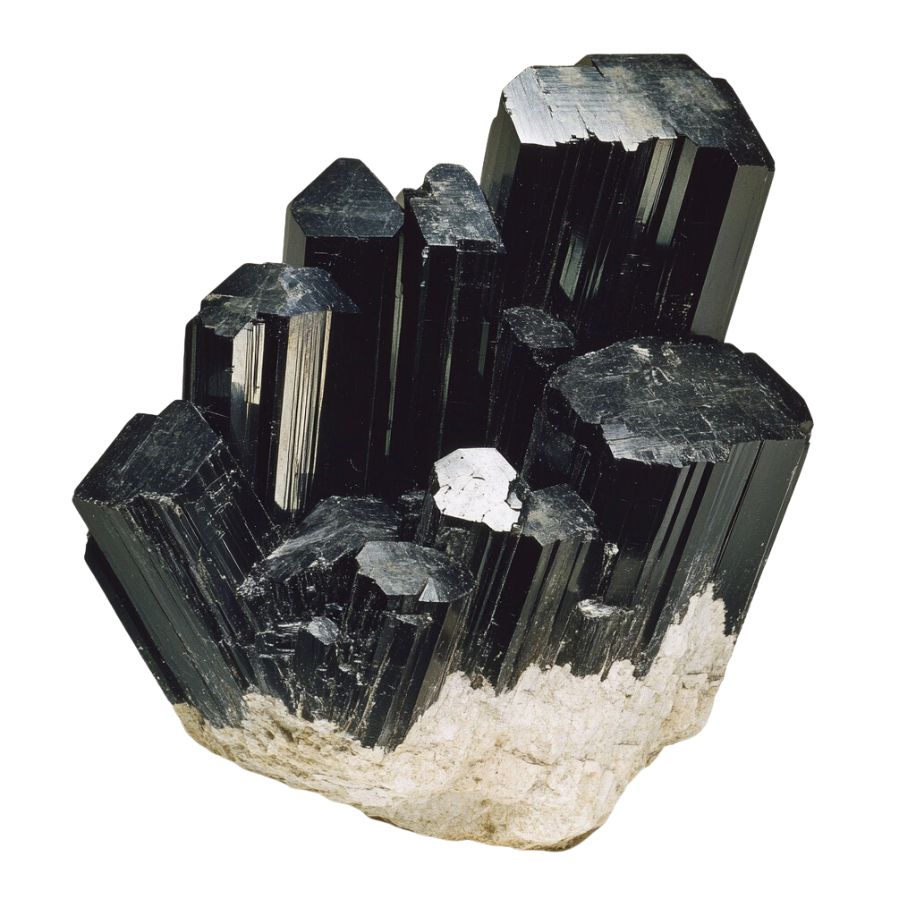
Tourmaline
Tourmaline is a gorgeous, crystalline mineral that comes in a rainbow of colors, from deep greens to striking pinks and everything in between. It’s known for its unique prismatic shape and is often found alongside quartz and mica.
Here in Ohio, black tourmaline, or schorl, is the most common type. It’s not as flashy as the colorful varieties, but it’s still a prize for rockhounds because of its striking, jet-black sheen and fascinating crystal formations.
Why It’s Valuable
Tourmaline is a powerhouse in the metaphysical world. People believe it has protective and grounding properties, which makes it a popular choice for jewelry and healing practices.
On top of that, its rarity in Ohio means that finding a piece here feels like hitting the jackpot. Even if you’re not into crystals for their “energy,” the uniqueness of Ohio tourmaline makes it a gem worth adding to your collection.
Great Places to Find It Here
Ohio has a few prime spots where you can search for tourmaline. Here are my top recommendations:
- Clear Creek: Known for its beautiful natural setting, this area is also a great place to search for tourmaline and other crystals along the creek beds and rocky areas.
- Jackson County: The rich geological diversity here makes it a favorite for rockhounds. Tourmaline has been found in various sites across the county, especially near old mining locations.
- Everett Sand Rock Quarry: This quarry is a hotspot for finding all kinds of interesting minerals, including black tourmaline. It’s a bit rugged, but with the right tools, you might uncover something incredible.
Explore additional Tourmaline sites throughout Ohio with our detailed guide.
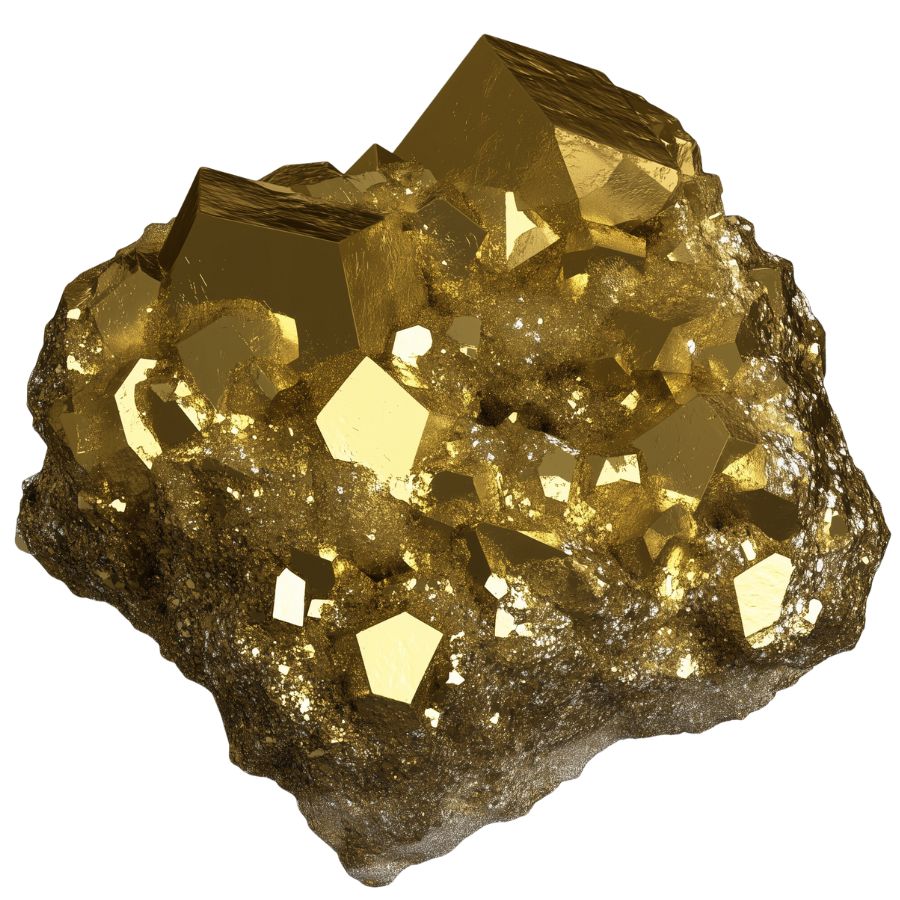
Pyrite (Fool’s Gold)
Pyrite is a mineral made of iron and sulfur (FeS₂). It forms in a variety of shapes and textures, from smooth, cube-like crystals to rough, glittery masses. In Ohio, pyrite is often found in coal mines, shale formations, and even riverbeds.
The most common types you’ll see around here include Massive Pyrite, Cubic Pyrite, and Framboidal Pyrite.
Why It’s Valuable
For one, Pytite brilliant metallic luster and golden color make it a striking display piece. It’s also a great “indicator mineral,” helping geologists learn about the conditions under which certain rocks formed.
Plus, there’s just something magical about finding a glittering treasure out in nature, even if it’s not actual gold.
Great Places to Find It in Ohio
There are plenty of spots to explore. Here are a few of my favorite places:
- Coal Mining Regions in Eastern Ohio: Old coal mines, particularly in areas like Belmont and Guernsey counties, often have leftover pyrite.
- Cuyahoga Valley National Park: While this park is known for its stunning scenery, it also has some promising spots along its rivers and creeks where pyrite nodules occasionally show up.
- Hocking Hills Region: Keep an eye out in streambeds and shale outcrops while hiking—it’s not uncommon to spot some pyrite sparkling in the sunlight.
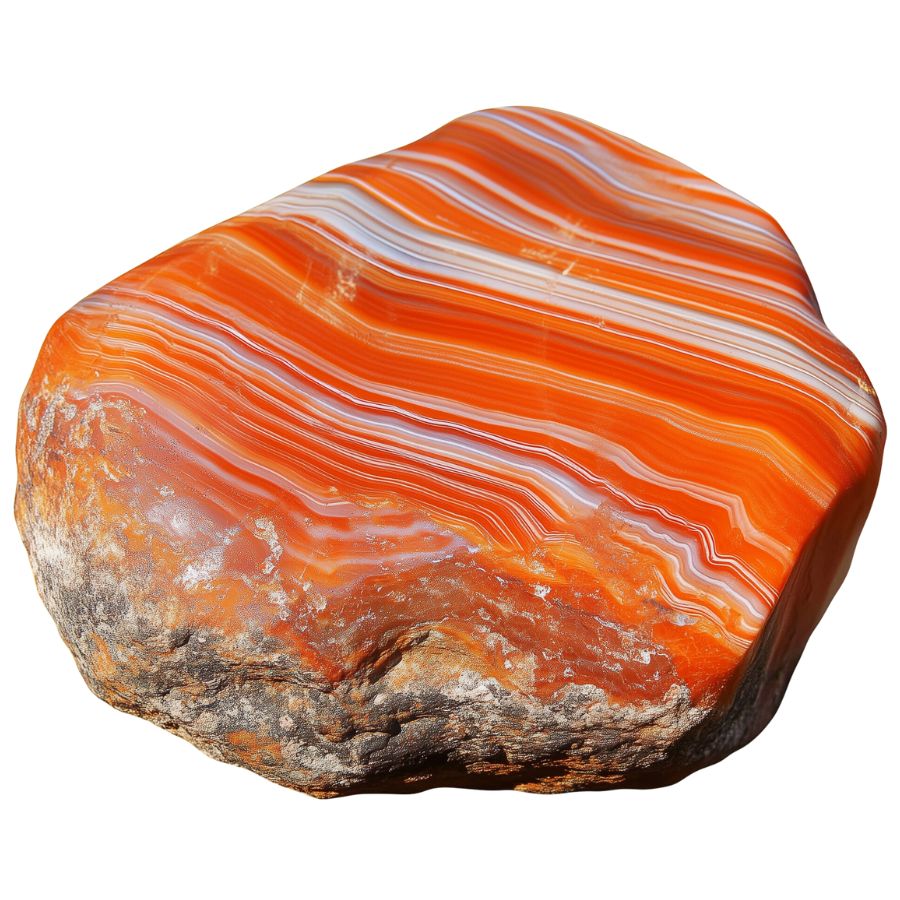
Agate
Agates are a type of microcrystalline quartz with distinctive bands of color that make each one unique.
In Ohio, we’re lucky to have several types of agates, including Lake Superior agates, carnelian agates, and occasional nodules with vibrant reds, oranges, and browns. These colors come from the presence of iron and other minerals during their formation.
Most of the agates you’ll find here have been shaped and polished naturally by glacial movement, giving them a smooth, rounded appearance.
Why Agates Are Valuable
For starters, they’re beautiful! Agates are prized for their unique patterns and colors, making them popular for jewelry and collectibles. B
eyond their aesthetic value, these stones have a rich geological history, which makes them fascinating to study.
Great Places to Find Agates in Ohio
Ohio is a treasure trove for agate hunting if you know where to look. Here are a few of my favorite spots:
- Mohican State Park: Nestled in the heart of the state, Mohican State Park offers both scenic hiking trails and a chance to find agates along its rivers and streams.
- Ashtabula County Beaches: Lake Erie’s shoreline is a hotspot for agate hunting, especially after storms.
- Gravel Pits and Quarries in Central Ohio: These are some of the best spots to find larger specimens.
Find additional Agate spots in our complete Ohio guide.
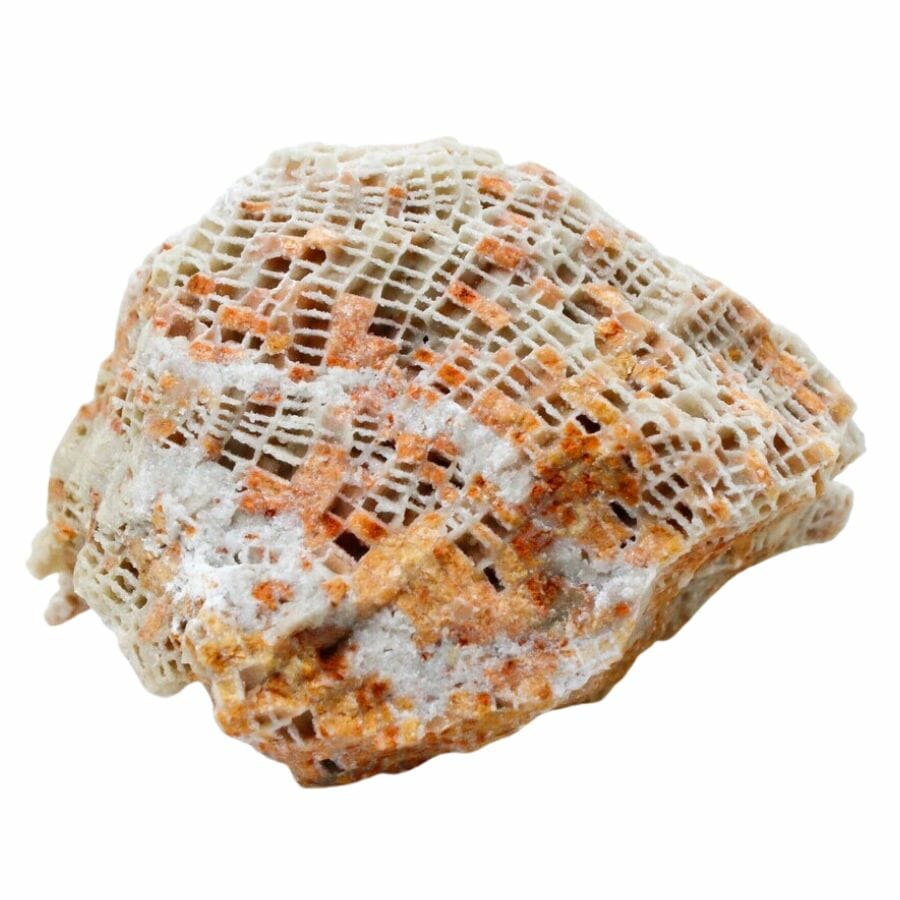
Fossilized coral
Fossilized coral is the remains of ancient coral reefs that have turned to stone over millions of years.
Back during the Devonian period—around 350 to 400 million years ago—Ohio was a tropical paradise under a shallow sea. These reefs were teeming with life, and over time, they left behind stunning fossilized remains.
Here in Ohio, you can find two main types of fossilized coral: Tabulate coral and Rugose coral. Tabulate coral forms honeycomb-like patterns, while Rugose coral, also called horn coral, often has a horn or cone shape.
Why It’s Valuable
Fossilized coral is a window into the distant past. It helps scientists understand ancient marine environments and the creatures that lived in them.
On a personal level, fossilized coral can be a unique and meaningful addition to a rock collection. Some pieces are even used in jewelry-making because of their intricate patterns and beauty.
Great Places to Find It in Ohio
If you’re want to get out and hunt for some fossilized coral, Ohio has plenty of great spots. Here are a few you should check out:
- Hueston Woods State Park – Head to the spillway here for some excellent fossil hunting. You’re likely to find fossilized coral mixed in with other marine fossils like crinoids.
- Silica Shale Quarries near Toledo – If you’re up in northwest Ohio, these quarries are known for their Devonian-era fossils.
- Caesar Creek State Park – This park is a hotspot for fossil hunting, especially in the emergency spillway area.
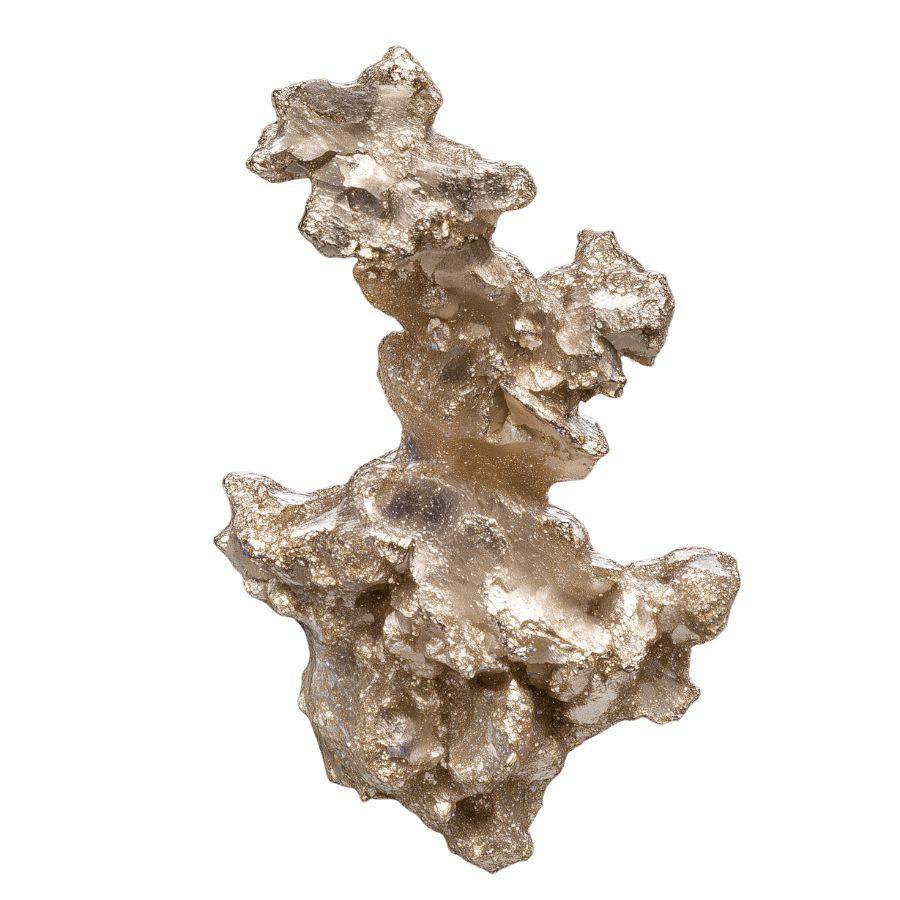
Silver
Silver is a shiny, malleable metal known for its beauty and conductivity. In Ohio, silver is typically found in small natural deposits, often mixed with other minerals like galena (a lead ore) or pyrite.
Although Ohio doesn’t have massive silver mines, some regions have yielded native silver. We’ve mapped out Silver locations throughout Ohio for you.
Why It’s Valuable
Silver isn’t just beautiful; it’s versatile and has been cherished for centuries. Its use in jewelry and coins is well-known, but it also plays a critical role in technology and medicine due to its excellent conductivity and antibacterial properties.
In Ohio, silver is particularly valued for its historical significance, with artifacts telling the story of the state’s early inhabitants and development.
Great Places to Find It Here
If you’re looking to explore Ohio’s connection to silver, there are some excellent spots to visit. Whether you’re searching for natural silver-bearing minerals or historical artifacts, these places are worth checking out:
- Flint Ridge Nature Preserve: While primarily famous for flint, silver-bearing minerals have occasionally been found here.
- Old Chillicothe Area: Near present-day Xenia, this historic region is tied to Ohio’s early settlements. Over the years, silver coins and other artifacts from centuries past have been discovered in this area.
- Beaver Creek: It’s known as a good location for searching for silver-bearing rocks and minerals, especially along creek beds.
Our complete Ohio guide shows you where to find more Silver.
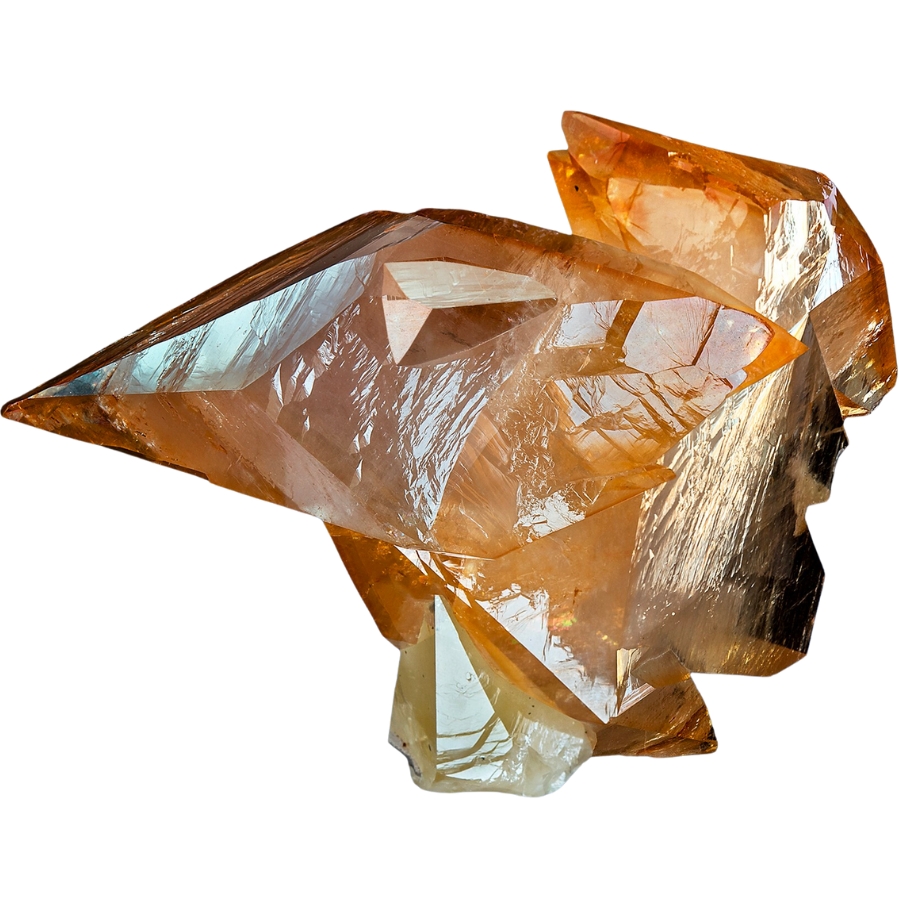
Calcite
In Ohio, calcite comes in several forms, and each has its charm. Clear or white crystals are the most common, but some have a golden or amber hue that makes them particularly stunning.
Occasionally, you might stumble across fluorescent calcite, which glows under UV light. Another type, dogtooth spar, has sharp, pointed crystals that look like—you guessed it—dog teeth.
Why It’s Valuable
Calcite has practical uses and collector appeal, making it valuable for different reasons. Geologists and rockhounds love it for its beauty and the insights it provides about Ohio’s geological history.
It’s also used in construction, agriculture, and industrial processes like making cement or neutralizing acidic soils. On top of all that, it’s a fantastic teaching tool for understanding crystal structure and mineral formation.
Great Places to Find It Here
If you’re looking to add some Ohio calcite to your collection, you’re in luck—our state is a treasure trove of this mineral. Here are a few of the best spots to explore:
- Stoneco Quarry: This quarry is a favorite among collectors for its well-formed calcite crystals. Just be sure to check for permission before heading in!
- Northwest Ohio: This region is famous for its limestone and dolostone formations, which often host beautifully crystallized calcite. Quarries near Findlay and Carey are especially productive.
- Licking County: While this spot is better known for flint, you can sometimes find calcite crystals tucked into the cracks and cavities of the surrounding limestone.
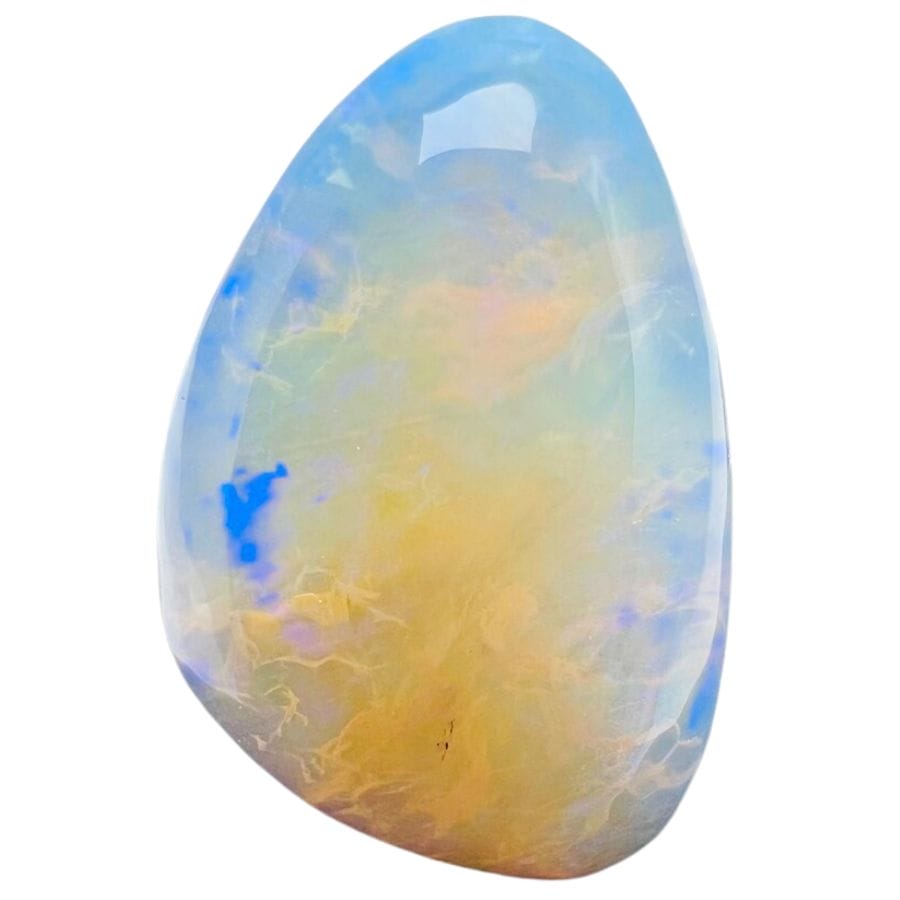
Opal
Opal is a unique and colorful gemstone that forms when silica and water combine over millions of years. While Ohio isn’t famous for opals compared to places like Australia, we still have our own variety of these fascinating stones.
Most opals found here are common opals rather than the flashy, rainbow-colored precious opals. Ohio’s opals tend to have milky, translucent appearances and soft pastel shades, with occasional specimens showing faint play-of-color.
Why It’s Valuable
The opals you find in Ohio might not make you rich, but they’re definitely worth your time. For starters, they’re a tangible connection to the ancient geological history of our state, formed millions of years ago in sedimentary rocks.
Collecting opals is also a fun, hands-on hobby that gets you out into nature. Plus, these stones make great keepsakes or gifts, especially if you polish them up or turn them into jewelry.
Great Places to Find It Here
If you’re ready, there are some fantastic spots to find Opal in Ohio. Here are my top picks:
- Marble Cliff Quarry: This area is well-known for its sandstone formations and rich geological history. You’re more likely to stumble across small opal specimens near creeks and exposed rock faces.
- Bill Moose Run: This area’s sedimentary deposits can occasionally yield hidden gems if you’re willing to dig a little.
- Ohio River Gravels: Try searching along the riverbanks, especially after heavy rains when fresh material is often washed up.
View our complete Ohio guide for more Opal locations near you.
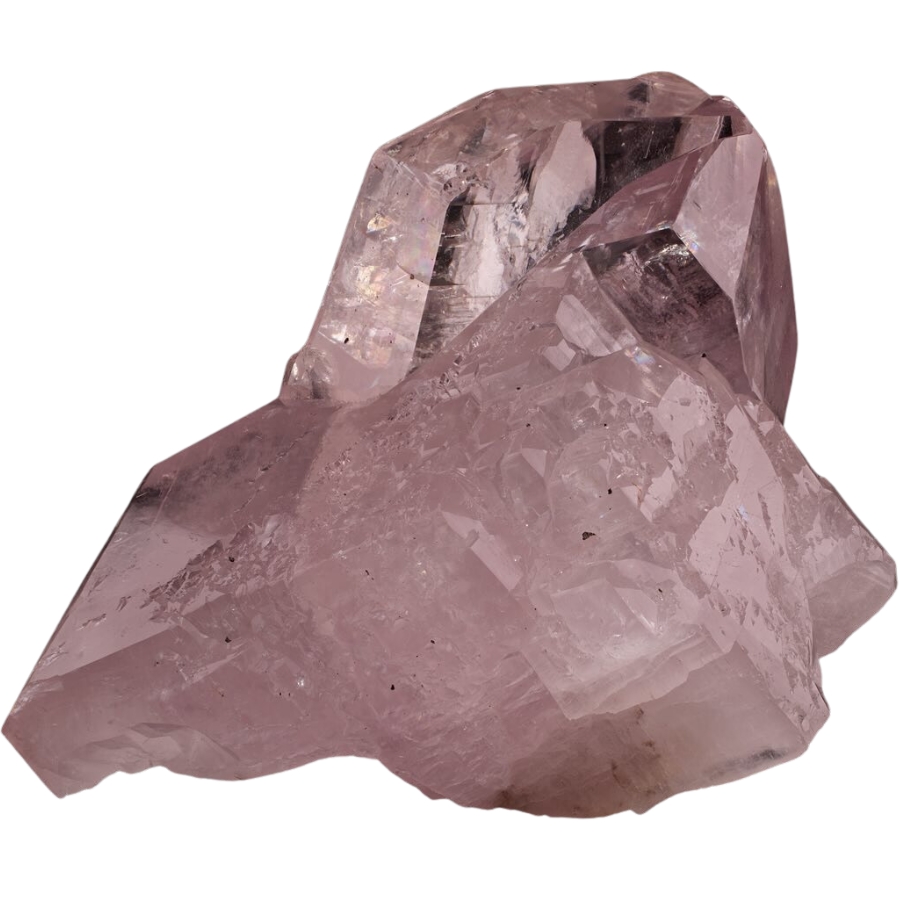
Calcite
Calcite comes in a variety of forms, and Ohio has its fair share of these beauties. You can find clear, transparent crystals, often called “dogtooth spar,” which are shaped like little spikes. There’s also “drusy” calcite, where tiny, sparkly crystals coat rock surfaces.
If you’re lucky, you might even come across golden or amber calcite, which has a warm, honey-like hue. The color and type depend on where you’re looking and the minerals mixed in during formation.
Why It’s Valuable
Geologists love Calcite because it’s a great indicator of the environments where it formed. For instance, calcite deposits in Ohio tell us about the ancient seas that once covered the state millions of years ago.
Industrially, calcite is important for everything from cement production to agriculture, where it’s used to balance soil pH. And let’s not forget collectors—calcite specimens are highly sought after for their beauty and unique crystal formations.
Great Places to Find It Here
If you want to see some calcite up close, Ohio has plenty of spots to explore. A few of them are:
- Cemex Quarry in Fairborn: Located near Dayton, this quarry is a hotspot for calcite crystals, especially the clear and amber varieties. You might need permission to visit, but it’s worth the effort.
- Marion Quarry in Marion County: Known for its striking drusy calcite and well-formed crystal clusters, this site is a favorite among collectors.
- Pugh Quarry near Custar: Situated in Wood County, this quarry is famous for its beautifully formed calcite crystals, often found in striking golden and amber hues.
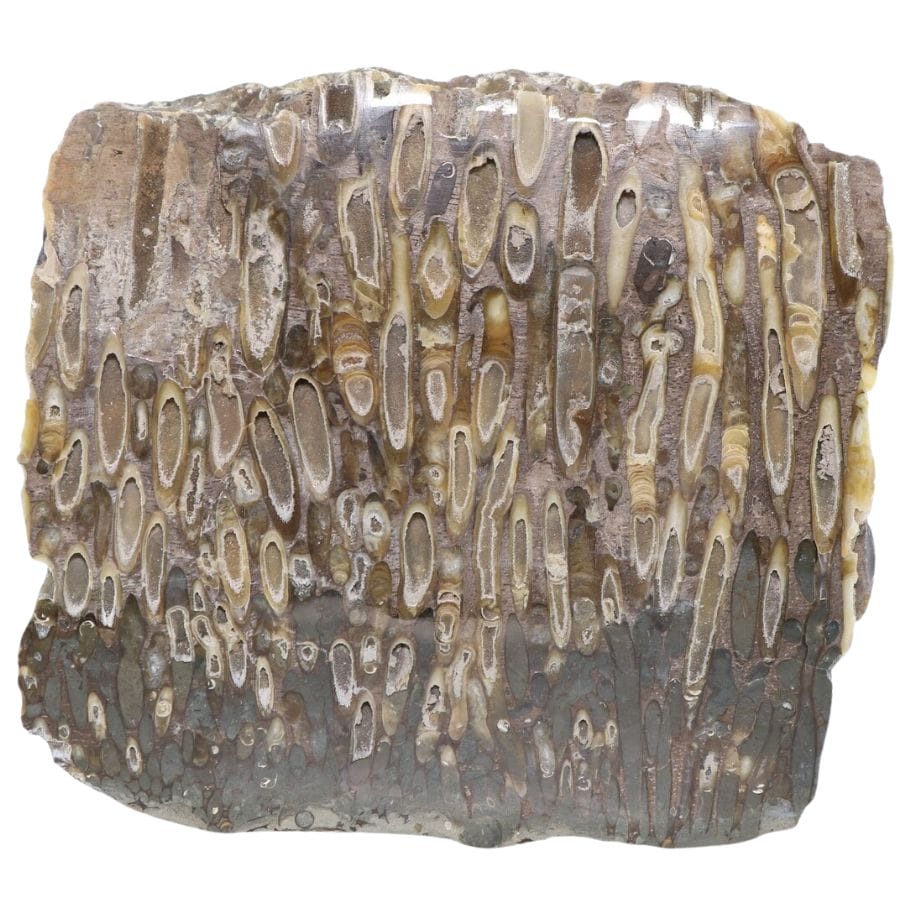
Fossils
Fossils are one of the coolest ways to connect with ancient history of Ohio. Ohio’s fossils tell the story of a time when this land was covered by shallow seas, lush swamps, and ancient forests.
From tiny sea creatures to massive plants, these remains of the past are scattered across the state, waiting to be discovered.
Why Fossils Are Valuable
Fossils aren’t just interesting relics; they’re windows into the Earth’s distant past. They help scientists reconstruct ancient ecosystems, understand climate changes, and trace the evolution of life.
For those of us who live here, they’re a hands-on way to connect with our local history. Collecting fossils is not only educational but also a lot of fun—each find feels like uncovering a tiny piece of Ohio’s prehistoric puzzle.
Great Places to Find Fossils in Ohio
Ohio offers many places where you can dig for fossils and take home a bit of ancient history. Whether you’re a seasoned collector or just looking for a weekend adventure, these spots are worth visiting:
- Caesar Creek State Park: Located in southwestern Ohio, this park is famous for its Ordovician fossils, including trilobites and brachiopods.
- Hueston Woods State Park: Near the Indiana border, this park has limestone bedrock full of ancient sea creatures like horn corals and crinoids.
- Fossil Park in Sylvania: If you’re in northwestern Ohio, this free, family-friendly dig site offers an abundance of Devonian fossils. It’s easy to access and a great place for beginners.
See where else to find Fossils in Ohio with our full guide.


